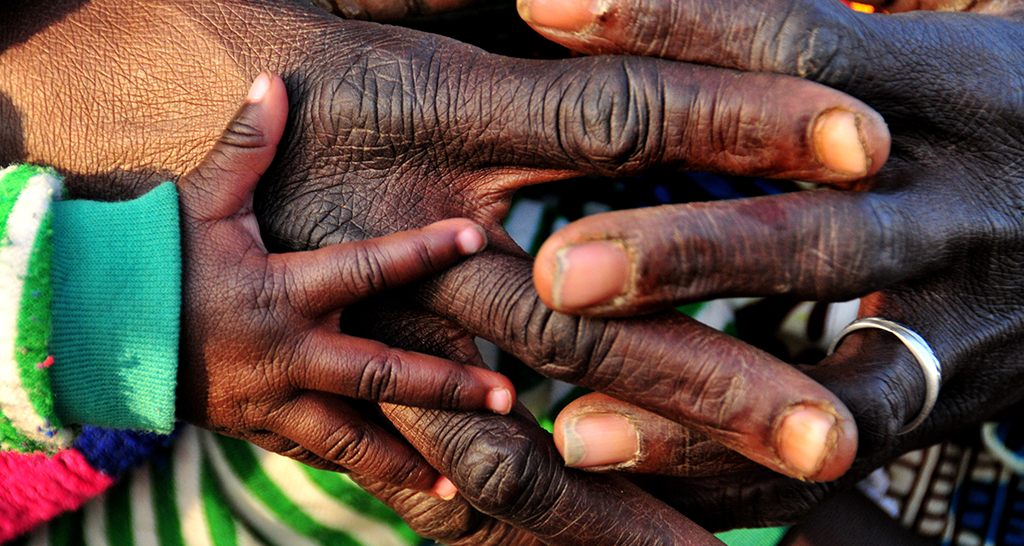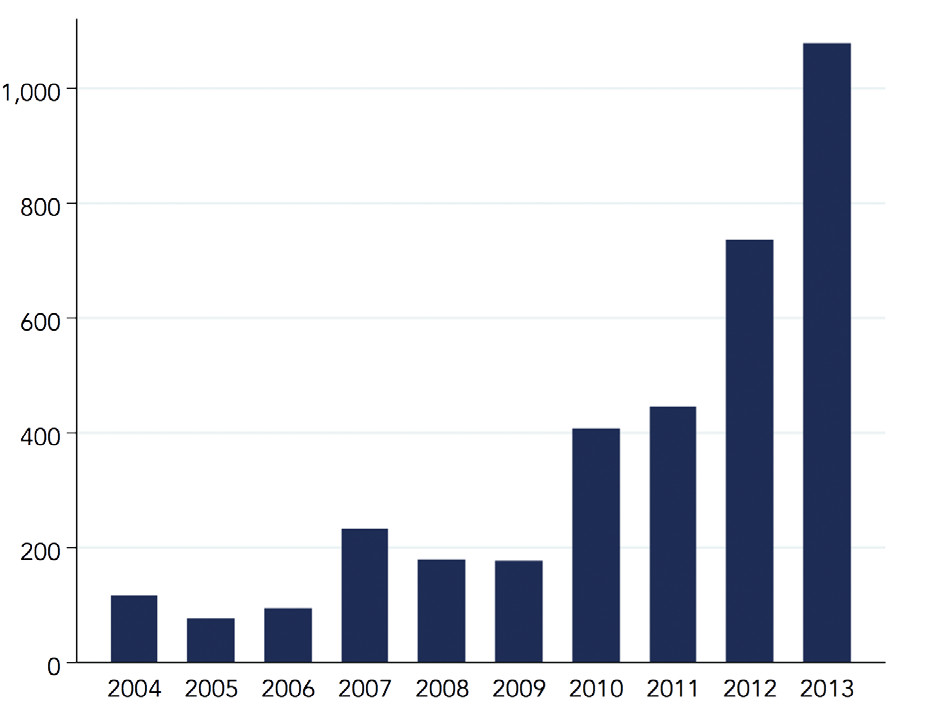Cost/Benefit Data Propels Change: The Global Nutrition Movement
DATA
In the past decade, economists and public health researchers have more precisely quantified the costs and benefits of specific nutrition interventions
IMPACT
Global aid disbursements for basic nutrition programs have increased tenfold since 2006, and many countries have made impressive progress in reducing child stunting

Photo: Elizabeth Whelan, “Untitled,” Sana, Mali. Creative Commons BY-NC-ND license obtained; available at https://creativecommons.org/licenses/by-nc-nd/2.0. Used with permission.
In recent years, a network of public health professionals, economists, and activists has amassed a powerful body of evidence arguing that nutrition interventions are among the most cost-effective investments a government can make, not only for the families affected but also for national economies. Their work, publicized especially through the Copenhagen Consensus conference and the prestigious medical journal The Lancet led to the creation of the Scaling Up Nutrition (SUN) movement, a partnership of 54 countries committed to large-scale inter ventions against malnutrition.1 Global aid earmarked for nutrition programs increased from $108 million in 2006 to $1.08 billion in 2013. 2
Barriers to Eradication
Government action against malnutrition has historically been weak. This is partly because the illness is most severe among the children of families with limited political voice: small farmers and landless workers, slum dwellers, ethnic minorities. And becausethe consequences of malnutrition are indistinguishable from theproblems of poverty more generally for example, recurring illness and poor school performance – communities rarely demand nutrition-specific reforms.
From Pilot to Scale-Up
In 2008 and 2012, the Copenhagen Consensus conference asked the world’s most respected economists to analyze how $75 billion could be best spent for improving global welfare. Nutrition interventions dominated the list of winning ideas.3 4 The Lancet published special series on maternal and child undernutrition in 2008 and 2013, commissioning teams of public health researchers to detail the costs and benefits of a wide range of nutrition interventions. Once again, the results were unambiguous: investing in nutrition yields enormous gains for children, families, and societies.5 6
How Digital Map Data Made a Difference
Bolstered by data-driven arguments for action, global attention to nutrition continues to grow, with more and more government leaders publicly committing to larger nutrition budgets. To meet the need, donor agencies are greatly increasing international aid disbursements for nutrition (see figure). The causes of malnutrition are complex, and definitively linking higher funding to impact is difficult. In many countries, however, progress is impressive. In India, for example, programs for nutrition are rapidly expanding and about 14 million fewer children are chronically undernourished now as compared to a decade ago.7
Total official development assistance from all donor countries to all recipient countries for basic nutrition programs, in 2013 dollars adjusted for inflation. Source: OECD Creditor Reporting System.
Organization for Economic Cooperation and Development (OECD). 2014. “Creditor Reporting System.” OECD StatExtracts. https://stats.oecd.org/Index.aspx?DataSetCode=CRS1# (accessed April 12, 2014)
References
1. Scaling Up Nutrition (SUN) Movement. 2014. Annual Progress Report: September 2014. http://scalingupnutrition.org/resources-archive/country-resources/progress-in-the-sun-movement#.VSrjm-cfypo (accessed April 12, 2014)
2. Organization for Economic Cooperation and Development (OECD). 2014. “Creditor Reporting System.” OECD StatExtracts. https://stats.oecd.org/Index.aspx?DataSetCode=CRS1# (accessed April 12, 2014)
3. Copenhagen Consensus Center. 2008. “Copenhagen Consensus II: Outcomes.” http://www.copenhagenconsensus.com/copenhagen-consensus-ii/outcomes (accessed April 12, 2015)
4. Copenhagen Consensus Center. 2012. “Third Copenhagen Consensus Outcome Document.” http://www.copenhagenconsensus.com/publication/third-copenhagen-consensus-outcome-document (accessed April 12, 2015)
5. The Lancet. “Series on Maternal and Child Undernutrition.” 2008. The Lancet, January 16, 2008. http://www.thelancet.com/series/maternal-and-child-undernutrition (accessed April 12, 2015)
6. The Lancet. “Series on Maternal and Child Nutrition.” 2013. The Lancet, June 6, 2013. http://www.thelancet.com/series/maternal-and-child-nutrition (accessed April 12, 2015)
7. International Food Policy Research Institute (IFPRI). 2014. Global Nutrition Report 2014: Actions and Accountability to Accelerate the World’s Progress on Nutrition. Washington, DC: IFPRI.
